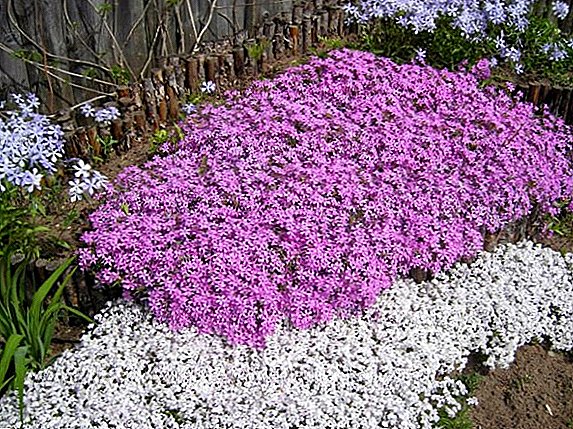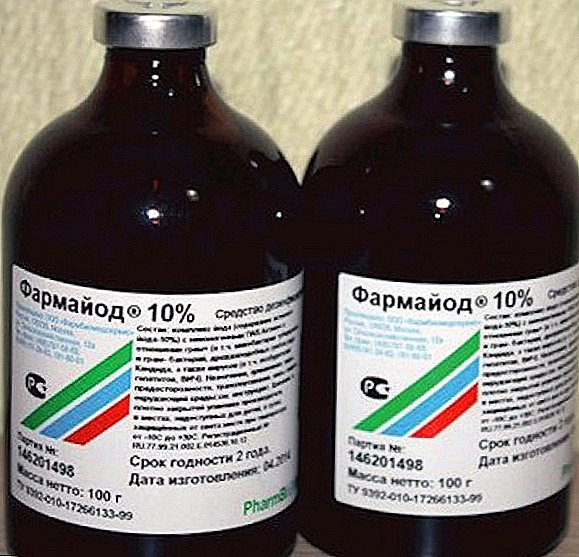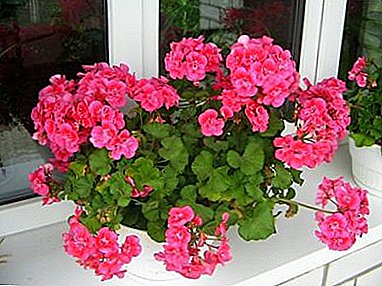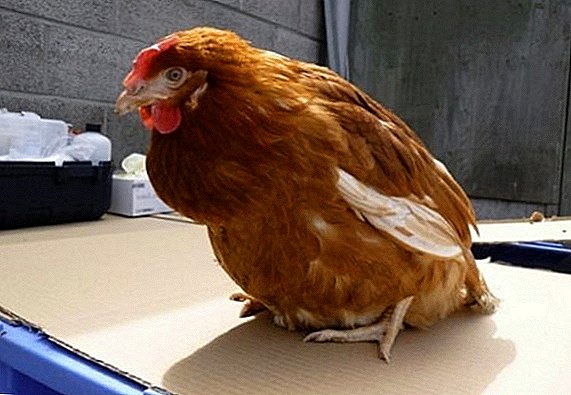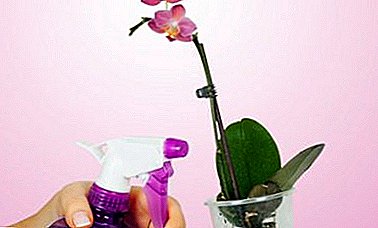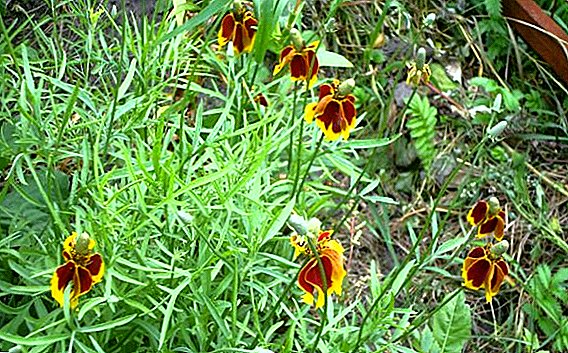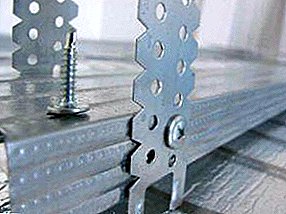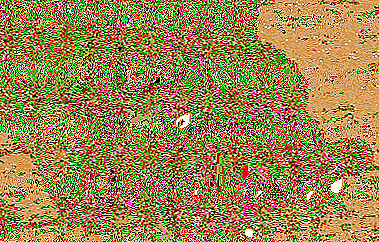
Most gardeners prefer to prepare for the summer season on their own, not trusting the quality of the purchased seedlings. Preparation takes place in several stages. The seeds are prepared in advance, the time of planting the seedlings in the ground is calculated, the seeds are germinated, sprouting spikes and the long-awaited process of growing the seedlings begins.
At this stage, gardeners face growing problems or plant diseases. One of the most common undesirable symptoms of both is the change in the color of the stems or leaves of the seedlings, and sometimes in the whole plant. Moreover, it is the changed color of the plant that will help determine the type of problem.
Why are tomato leaves turned purple?
A healthy plant has a juicy stem with leaves and rich green color. The appearance on the bottom of the leaves of the seedlings of purple, crimson spots, which soon become purple, indicates that your plant is unhealthy.
Important! If you do not take action, the leaves of purple will soon cringe, wither and stick to the trunk, the escape will not grow. The stem will become more rigid and fragile, the roots will dry out and the seedling will die.
The causes of illness can be several.
- Violation of temperature. Tomatoes are thermophilic plants and are very sensitive to temperature extremes. For proper development of the bush and the formation of fruit temperature ideally should be at least + 20 ° C.
If the soil temperature has dropped below + 12 ° C, and air - + 14 ° C, the plant ceases to absorb phosphorus from the soil, which is important for its development. The same thing happens at high temperatures, above + 40 ° C.
It is because of the lack of this trace element leaves get a purple hue.
- Unbalanced soil. For the proper development, growth, formation of ovaries and abundant fruiting, tomatoes need to get phosphorus. It is recommended to prepare the soil rich in this trace element for seedlings initially. If the soil does not contain enough phosphorus, the plant is stunted in growth and changes color to purple.
The same happens with acidification or alkalization of the soil. Liquid trace element goes into insoluble form and ceases to be absorbed by the plant. Lack of phosphorus, in turn, leads to poor uptake of nitrogen, which also adversely affects the growth of tomatoes.
- Violation of the light mode. Lack of light in the winter, as well as growing seedlings exclusively under fitolamps, can also lead to a change in color of the seedlings to purple.
The fact is that the spectrum of the rays of the phytolamp is limited, and it is desirable to use such lamps for sun-loving tomatoes only in addition to the main light.
- Lack of phosphorus. Seedlings of tomatoes during growth accumulates phosphorus and consumes it throughout the season.
What to do?
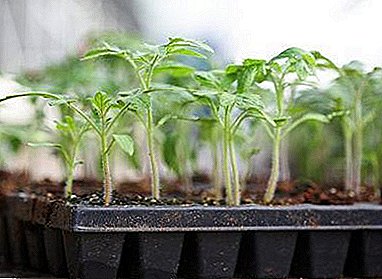 Temperature conditions are fairly easy to normalize.. If it is a seedling on a windowsill, place a foil under the box and raise the room's daytime temperature to 18 ° C.
Temperature conditions are fairly easy to normalize.. If it is a seedling on a windowsill, place a foil under the box and raise the room's daytime temperature to 18 ° C.If the plants change color after planting in the ground in the greenhouse, then it will not be superfluous to put a heater in the greenhouse until the air temperature is normalized.
It also happens that after planting seedlings in the ground there is an unexpected cooling. Refer to the good grandmother's ways. With a cold snap, the summer cottages of the last century were littered with three-liter cylinders. Putting on a seedling balloon, a greenhouse effect was formed. At one time, these little tricks helped save seedlings even from light frost.
- Soil nutrition. The case when the temperature regime is normalized, but the leaves do not restore their green color, suggests that there is not enough phosphorus in the soil, or it has turned into an insoluble form. These causes can be corrected using ready-made nutritional formulations that are balanced in mineral content. Moreover, you can fertilize both the soil itself and the bush itself by spraying.
Note. It is recommended 1-2 weeks before transplanting to the ground to feed tomatoes with phosphorus. This will give the bushes the opportunity to adapt to a new place and when the temperature drops, the seedlings, although they change color, will not die.
- Fertilizer should be carefully. A glut of phosphorus can negatively tell on the growth of tomatoes.
The most popular remedy for gardeners is superphosphate fertilizer. It is also suitable not only for tomatoes. For open ground use a dry mixture, which is made every 2-3 years in spring or autumn before digging the soil. 40 grams is enough for one square meter. For seedlings it is better to use fertilizer in liquid form. To do this, 20 grams of fertilizer diluted in 10 liters of water and insist day.
For foliar feeding gardeners advise liquid fertilizers, such as Agricola. 1 spoon diluted in five liters of water. It is not recommended to exceed the specified dose, in order to avoid burns of leaves. Spray morning and evening in cloudy weather. Essential trace elements are absorbed through the leaves.
- Do not apply fertilizer during cold snap. In order for fertilizers to be fully assimilated by plants, the air temperature should be around 18 ° C.
 So that phosphorus does not become solid and is absorbed by tomatoes, the soil is limed with chalk, dolomite, lime. Since autumn they bring organic matter: compost, humus. Qualitatively improve the composition of the soil siderata. Remarkably will help the tool "Baikal-M". Microorganisms turn the soil into black soil. You can use it at all stages of growing tomatoes.
So that phosphorus does not become solid and is absorbed by tomatoes, the soil is limed with chalk, dolomite, lime. Since autumn they bring organic matter: compost, humus. Qualitatively improve the composition of the soil siderata. Remarkably will help the tool "Baikal-M". Microorganisms turn the soil into black soil. You can use it at all stages of growing tomatoes. - Tomatoes love slightly acidic or neutral soil.. In addition to superphosphate, the following fertilizers are also recommended: Double superphosphate, Ammophos, Ammophosca, Nitrophoska, Potassium monophosphate. And also natural top dressing which is brought in the form of a compost: humates, bone meal, feather grass, hawthorn, thyme.
Granular fertilizers are applied directly under the root. Phosphorus, which has been in the ground for about 3 years, is best absorbed.
- Light regime of plants is not difficult to normalize. Choose a south window. Build foil shields and use special LED lamps to supplement this.
Disease prevention
Preventive measures for self-growing seedlings are very important. They are aimed at strengthening and hardening of seedlings and at developing immunity to diseases, pests and temperature changes. And it is desirable to begin such prevention from the seeds themselves.
Also It is recommended to water the seedlings not with ordinary water, but with a minimal solution of humate. To do this, one teaspoon of the substance mixed with a small amount of boiling water until smooth. Then pour it into a two-liter container with water. This is a concentrate. It can be stored for a long time.
Immediately before irrigation, dilute 100 ml of concentrate with one liter of water. This weak humate solution is used for single use.
General preventive tips:
- Soak the seeds in the nutritional mixtures.
- Preparation of soil rich in trace elements and with low acidity.
- Regular feeding of seedlings, especially before planting in the ground.
- Observance of light and temperature conditions.
- Timely watering and moistening.
- Preventive treatment against diseases and pests with drugs such as Home, Barrier, Barrier, etc.
Compliance with these measures will avoid many problems and will allow you to grow a healthy, strong and tasty harvest!


 Temperature conditions are fairly easy to normalize.. If it is a seedling on a windowsill, place a foil under the box and raise the room's daytime temperature to 18 ° C.
Temperature conditions are fairly easy to normalize.. If it is a seedling on a windowsill, place a foil under the box and raise the room's daytime temperature to 18 ° C. So that phosphorus does not become solid and is absorbed by tomatoes, the soil is limed with chalk, dolomite, lime. Since autumn they bring organic matter: compost, humus. Qualitatively improve the composition of the soil siderata. Remarkably will help the tool "Baikal-M". Microorganisms turn the soil into black soil. You can use it at all stages of growing tomatoes.
So that phosphorus does not become solid and is absorbed by tomatoes, the soil is limed with chalk, dolomite, lime. Since autumn they bring organic matter: compost, humus. Qualitatively improve the composition of the soil siderata. Remarkably will help the tool "Baikal-M". Microorganisms turn the soil into black soil. You can use it at all stages of growing tomatoes.